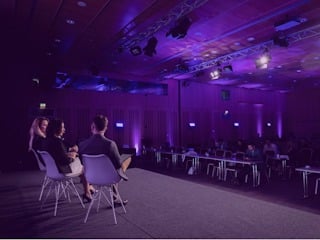According to Google, people typically interact with their smartphone around 150 times a day. Posting a photo on Instagram, sending an email or chatting with a friend are all examples of short, purpose-oriented ‘micro-moments’. And the last thing users want mid micro-moment, is to be interrupted by irrelevant attention-seeking by a brand.
The difficult thing is that at other times – in other micro-moments – users are open to external influences, especially when they are looking for information to help them make a choice. So how can you recognise these very different moments? And how can you make them work for you and your brand?
Four micro-moments
According to this Google report, there are four kinds of marketing micro-moments:
- I-want-to-know
- I-want-to-go
- I-want-to-buy
- I-want-to-do
The type of moment is determined by the purpose, context and urgency behind it. Creating successful dialogues with your target group rests on understanding each moment and knowing how to behave accordingly. And the most important conduit is mobile.
Mobile personal assistant
Smartphones now play a central role in our decision-making. 91% of smartphone users use one to find information while performing a task, and 82% say they use their phone while in a shop to get advice about a purchase.
Usage figures for mobile confirm this. Mobile sessions have risen 20%, while the length of each visit has fallen by 18%. You could conclude from this that users are finding what they are looking for, but that’s not the case, because between 2014 and 2015, mobile conversions rose by 29%. Extended search sessions have lost ground to fast, well-judged stimuli with a clear goal.
Needs lie at the heart of the matter
To succeed in a world of micro-moments, it is vital to win your customer’s consideration, and subsequent action. This means helping him or her achieve their goal. And you don’t do this by pushing a generic brand message via a display ad. When push comes to shove, customers are more loyal to their needs than they are to a brand.
When asked, 65% of smartphone users say they search for the most relevant information, regardless of the brand it comes from. 51% say they have bought from another company than the one they originally had in mind, based on who provided the best information. Brand preference is less and less important.
Now, this doesn’t mean you should only pop up at a conversion moment, such as a purchase. Consumers are quick to see through such tactics: 69% say the quality, timing and relevance of a message influences their perception of a brand. Instead, it is essential to dip in and out at multiple points on the consumer journey, offering as much help as possible along the way.
The three principles of a successful marketing strategy are therefore:
- Be available: anticipate micro-moments among your target group and commit to being helpful when they happen.
- Be helpful: connect people to the answers they are seeking, and concentrate on being relevant.
- Be fast: mobile users are fickle and demand speedy and easy experiences.
Understanding their needs
Having the right mindset, however, is not enough on its own to get you across the finish line. To be there at the right time and place, and in the right way, you need to understand your customer’s purpose and context. It may matter to know where someone is, what time it is and whether, thanks to it raining, she’s looking for an umbrella.
Faced with endless combinations of scenarios, the four phases identified by Google can help you avoid drowning in possibility overload:
I-want-to-know
In this phase, someone is exploring or researching, but not yet ready to buy. They want relevant, useful information – and maybe even inspiration – to lead them through the customer journey. They do not want a hard sell.
I-want-to-go
This is all about local relevance. Someone is looking for local shops or considering buying at a local shop. Your physical business therefore needs to be in their consideration set at that moment. Further underlining this is the fact that ‘near me’ searches have doubled in the last year. The same ‘rules’ apply to restaurants and events.
I-want-to-do
‘How to’-related YouTube searches are growing at 70% a year. Consumers are looking for help, whether before or after a purchase, so offer them the right kind of content.
I-want-to-buy
The moment of truth: someone is ready to make a purchase and needs help deciding on the what, where or how to buy. 82% of smartphone users use their phone in the shop, and 88% of consumers who search for local shops call up the next day. But you have to be there with the right information to seal the deal.
Do your research
With so many new insights to wrestle with, it can be hard to know where to start. But putting yourself in your customers’ shoes will get you a long way. Do a walk-through of the customer journey and observe what you see. The following questions can help you:
- What are the most important searches that are relevant to your brand or industry? Try these searches yourself. Are you found? Are you happy with what you discover?
- How often do you figure in the different needs within your customer journey? And how often do you provide the right information? Do you take account of the context and purpose of the search?
- And don’t forget to dig into your available data. How do visitors come to you? How do they behave? Why? (You can read more about optimising conversion here: The four essential steps for a structured CRO project.)
By understanding the purpose and context of your customer and their journey, and contributing to this in the most relevant ways you can, at least one of those 150 times a day that he or she uses their smartphone is likely to be all about you. In the end, customers just want to be helped.




